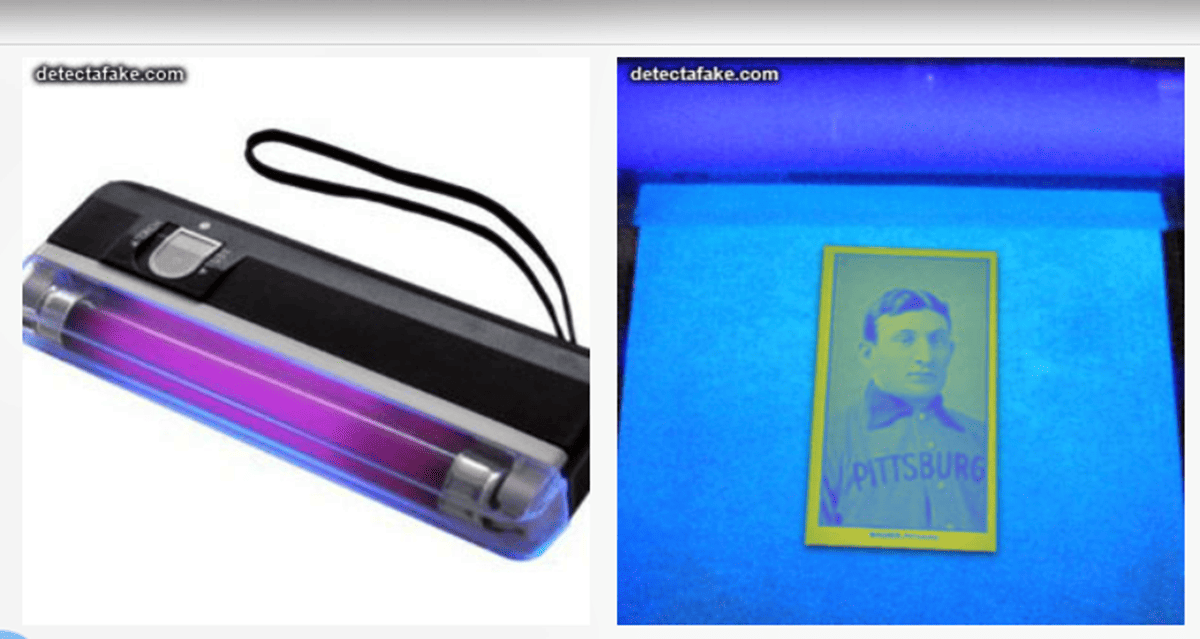How to Spot Baseball Cards
Initially crafted as a marketing tool, baseball cards have evolved into highly coveted collector’s items. Unfortunately, the surge in their value has also led to the proliferation of counterfeit cards in the collector’s market. To protect yourself from purchasing fake baseball cards, please take a look at the following tips.
How to Avoid Fake Baseball Cards
Step 1: Familiarize Yourself with Unique Card Characteristics
- Each baseball card set has its own distinctive stock, whether it’s the thick 1933 Goudey Gum cards or the paper-thin T205 or T206s. Handling cards and becoming familiar with their unique characteristics is your best defense against counterfeits. Even if you can’t examine a rare card in person, knowing the look and feel of common cards from specific eras is crucial.
Step 2: Use a Black Light for Older Cards
- Older fakes may be exposed using a black light. Modern fakes often fluoresce under black light due to brighteners in the paper, a trait absent in most older cards.
Step 3: Examine Printing Quality under Magnification
- Modern fakes struggle to replicate the high-quality printing of authentic baseball cards. Magnifying the card can reveal dots produced by a modern printer. Look for uniform dots that form a pattern, a potential sign of a fake.
Step 4: Verify Card Measurements
- Counterfeits, especially early tobacco cards, may deviate in size from authentic cards. Utilize resources like the Standard Catalog of Baseball Cards for accurate card measurements.
Step 5: Watch for Artificial Aging
- Counterfeiters often employ techniques like tea or coffee staining to simulate age toning. Check for signs of artificial wear, such as rounded corners or surface wear created by sandpaper. Be wary of torn areas or scrapes hiding indications of a reprint.
Step 6: Be Cautious of Unknown Card Types
- Watch out for card types that don’t exist in the legitimate collecting world. These are challenging to verify as they never existed. Use the internet to research any unfamiliar card. Every card should have some form of documentation.
Frequently Asked Questions (FAQs)
Why is handling and becoming familiar with the characteristics of various baseball cards important?
- Knowing the look and feel of different cards is crucial to identifying counterfeits, even if you can’t examine rare cards in person.
How can a black light help in detecting counterfeit older baseball cards?
- Modern fakes often fluoresce under black light due to brighteners in the paper, a trait not present in most older cards.
What printing quality signs indicate a potential fake when magnifying a baseball card?
- Uniform dots forming a pattern under magnification may suggest a modern printing method, indicative of a fake.
Why is it important to verify card measurements when identifying counterfeit baseball cards?
- Counterfeits, especially early tobacco cards, may differ in size from authentic cards. Resources like the Standard Catalog of Baseball Cards provide accurate measurements.
How can one identify artificial aging techniques used on baseball cards?
- Look for signs like tea or coffee stains, rounded corners, or surface wear created by sandpaper. Be cautious of torn areas or scrapes hiding reprint indications.







